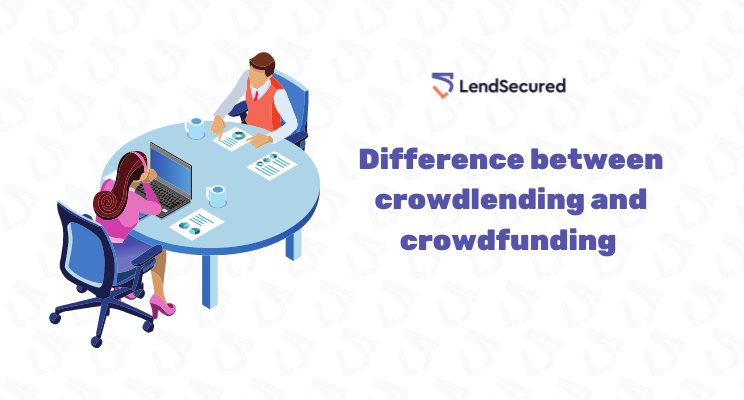We’ll review in detail how each of these funding types works and what are the benefits and risks for the investor. Read on to find out which funding type will bring you more profit while supporting an ethical cause.
What Is Crowdfunding?
Crowdfunding is a type of financing where an individual or a business use capital raised by a group of people for a specified purpose. The term is sometimes used to refer to four types of funding: donation, equity, debt, and reward-based. However, in this guide, we’ll refer as crowdfunding strictly to donation-based financing as it’s the most popular type. As the name suggests, in the case of donation-based crowdfunding, people contribute to a cause they support without receiving money in return.
How does crowdfunding work? Beginning entrepreneurs can post their project idea to a crowdfunding platform describing it thoroughly. Platform users then browse the project catalog and choose the cause they wish to support. Often, the decision is based on ethical reasons, though sometimes, the borrower obliges to send some reward. Typically, people contribute small amounts, and it may take plenty of time to raise the necessary sum. Crowdfunding may seem an easy way to make money. But the business idea should stand out and bring some value to society to get investor attention.
Most crowdfunding platforms have certain rules prohibiting giving specific rewards or raising funds for prohibited activities.
The Benefits and Drawbacks of Crowdfunding for Investors
The benefits of crowdfunding for beginning entrepreneurs are apparent, but what about investors? Crowdfunding is a low-risk opportunity to contribute to projects investors support ethically. It also enables non-sophisticated investors to gain connections and experience in financial decision-making. Sometimes, startups and individuals whose ideas become successful issue rewards to their best crowdfunding investors.
On the flip side, donation-based crowdfunding doesn’t bring any guaranteed investment returns. It’s also hard to control how an individual or startup uses the money raised, so such platforms are a common scammer target.
What Is Crowdlending?
Crowdlending is a form of crowdfunding (debt-based crowdfunding) also called peer-to-peer lending. In this financing method, lenders raise funds from supporting investors with an obligation to pay them back in a specified time. In other words, it’s lending obtained directly from individuals bypassing financial institutions.
Just like with crowdfunding, crowdlending funding can be raised on a dedicated platform. Individuals and businesses whatpost their projects along with a detailed description on a platform. The crowdlending platform then accesses the project risks and borrower’s credit rating. Based on this evaluation, the project gets assigned an annual interest rate and repayment term.
Once the application is approved, it gets published in the project catalog. On LendSecured, each entry is transparent to enable investors to make an informed decision. They can view the project description, registered borrower’s name, lending amount, annual return and term, and more information. Investors then choose a project to invest in, either a whole sum or its part. The borrower is accountable for repaying the funding with interest rate at agreed periods, and the platform charges a small fee for the services.
The Benefits and Drawbacks of Crowdlending for Investors
Investors use their own judgment when making decisions and can pursue both ethical and solely financial reasons. A good crowdlending platform additionally backs up lender’s funds by assessing risks before publishing the project in their catalog.
Unlike crowdfunding, crowdlending brings guaranteed investment returns with an interest rate. It’s considered one of the best short-term investment methods due to comparably low risks and high returns. An average annual crowdlending investment return rate is 12-14%. However, it can be as little as 4% for low-risk projects and as high as 20% for high-risk projects. Plus, investors don’t have to lend the entire sum. By diversifying the investments, lenders can minimize the risks of losing everything if a project is unsuccessful. More experienced investors, on the other hand, can opt for higher-risk projects with potentially higher investment returns.
One point to be aware of is the lack of government protection to peer-to-peer investors and varying legislation. Some governments require lenders to meet specific criteria to qualify. It’s important to research the rules regarding crowdlending in your country before you start investing.
Crowdfunding or Crowdlending?
Although crowdlending is considered a type of crowdfunding, these two financing methods differ substantially. Crowdfunding offers merely ethical benefits. Investors can support projects bringing value to the society, environment, or help to develop the local market. Donation-based crowdfunding is an ideal option for beginning investors and altruists. The issue is, controlling where the funds actually go may be complicated. People who wish to invest wisely should rather opt for crowdlending.
Crowdlending retains all the benefits of crowdfunding while eliminating its main drawback. Just like with crowdfunding, investors can follow their own ethical beliefs and help the environment or local entrepreneurs. Borrowers choosing crowdlending are often more financially stable and transparent about their intentions than those opting for crowdfunding. Crowdlending is an act of common wealth accumulation, where both the lender and the borrower enjoy benefits in the long term.
Lastly, crowdlending is an even better way to gain investment experience than crowdfunding. In both cases, investors choose where to invest based on the evaluation of the project success odds. But with crowdlending, they must also find the most profitable way to gain returns. It’s a safe way to experiment with investing in low- and high-risk projects, diversifying, and reinvesting.
Learn more about crowdfunding and crowdlending differences: P2P vs Crowdlending
Evaluate, Secure, Invest
Our mission is to help develop the local farming community and assist investors in accumulating their assets. Every financial decision should be informed, evaluated, and secured. Don’t hesitate to contact LendSecured for a consultation regarding the platform or potential investments.
